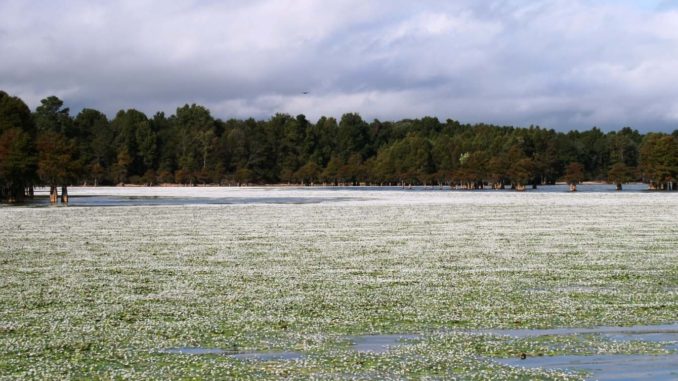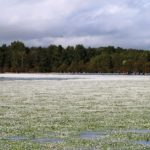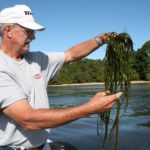
Lakes’ fisheries on rise, but some trouble lurks
January begins a new year and is a great month to discuss the overall condition of our lakes, especially since it seems to be very good and improving.
At a recent meeting of the South Carolina Outdoor Press Association, Scott Lamprecht, a fisheries biologist with the S.C. Department of Natural Resources whose territory includes the Santee Cooper lakes, made a presentation that can be summed up as the good, the bad and the ugly going on in the lakes.
First and foremost, the good news, and there’s lots of it. Lamprecht said that overall, fishing is better now, for more species, than it has been for a number of years.
“There are a lot of factors at play in the recovery of the lake in terms of fishing success,” Lamprecht said. “And it has to do with different things for different species. For example, the largemouth bass have made a phenomenal recovery in recent years, as have other panfish species such as bream and shellcracker. Ironically this is due in part to the drought we suffered through during a stretch of several years. That drought enabled some good, native vegetation to get a foothold in the lakes, and some of those grass species have thrived. They provide outstanding cover for a variety of fish species. At the top of the list is eel grass, but there is a lengthy list of good aquatic vegetation. That leads directly to better spawning and better recruitment into the fishery.
“For the improved crappie fishery, we have had consecutive years of strong recruitment as well,” Lamprecht said. “While we can’t say for sure it’s the native vegetation specifically that caused better spawning, since water level and other factors are also critical, we believe it does play a role. Plus, when we do have a good spawn now, there is good cover for the small fish to thrive and grow.”
Another reason for improved fishing is the change in regulations for some species, Lamprecht said.
“By placing a 36-inch size limit restriction on the number of blue catfish that can be kept, we think that fishery has been impacted in a positive way,” Lamprecht said. “In addition, the striped bass fishery has benefited from legislation, too. The creel (limit) has been dropped to two, and the size limit on striped bass upped to 26 inches. In addition, there is now a closed season on the fishery during the summer months when no fish can be kept because of extremely high mortality of striped bass caught at that time of the year.
“Together, these regulations have made a very positive influence on the fishery. This one will take time, but almost any regular striper fisherman will tell you they are catching a lot more stripers now than in the past 10 to 15 years. Time and catch-and-release will enable these fish to make it to the 26-inch class. Admittedly, that’s a large fish, but fish that size are also capable of spawning, which is another important issue in the recruitment of a strong striper fishery back into the Santee Cooper lakes system.”
As for the bad, Lamprecht said some vegetative species that are encroaching cause more problems to the lakes than they do in terms of helping the fishery. Grass carp and biological controls are being used to try to keep these problems to a minimum.
“Hydrilla is one that causes problems, but by using natural and biological controls, we’re having success with controlling it,” he said. “But when we think we have it down, it comes back in another area. But grass carp love hydrilla, so that’s a positive implication on that aspect.”
The ugly news is the part that gives him the most concern.
“In recent years, we’ve had problems with some exotic plants,” he said. “In terms of the problems with the these plants, specifically the crested floating heart, we have no good method of control. They grow amazingly fast and take over entire coves of water quickly. Grass carp don’t eat them, and no effective chemical control has been found.”
Lamprecht said crested floating heart is an extremely aggressive plant and spreads very rapidly. Plus, it has the capacity to shade out native grasses and thus take over and be the only plant in the system in the area it exists. The source of this invasive plant is unknown, but likely it’s something someone just dumped into the lake not knowing the potential ecological disaster it could create.
“We’d much rather see a diversity of native plants,” he said.
Lamprecht said overall the condition of our lakes is better now than in a long time. But there are still concerns regarding future developments.
“We need the support of local residents and fishermen to help us control exotic plants and animals,” he said. “The basic rule is don’t allow them to get into our lakes system.”







Be the first to comment